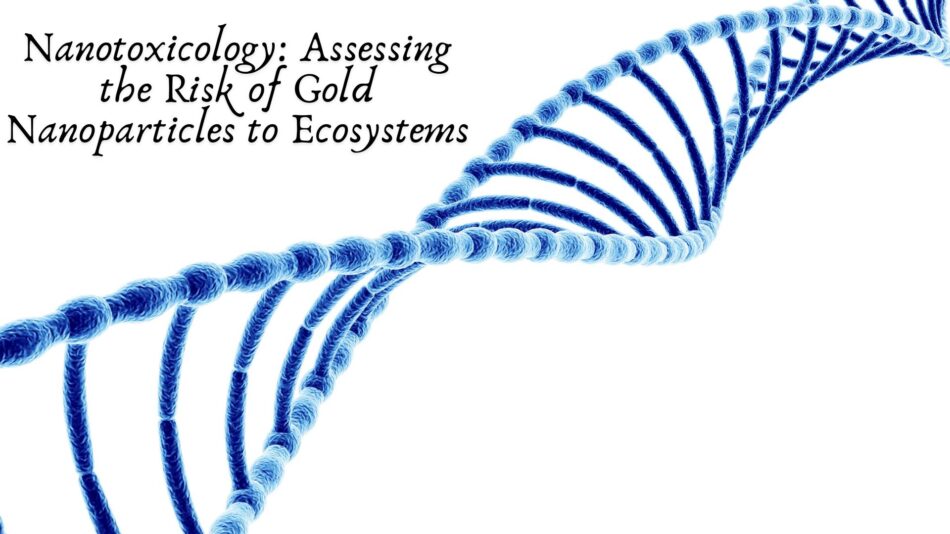Introduction
In recent years, nanotechnology has advanced rapidly, offering innovative solutions across medicine, electronics, energy, and environmental remediation. Among the various nanomaterials, gold nanoparticles (AuNPs) have garnered significant attention for their unique optical, electronic, and catalytic properties. While their applications are promising, there is growing concern about their potential ecological risks. As these nanoparticles are increasingly released into the environment through industrial waste, medical byproducts, and consumer products, the discipline of nanotoxicology has become crucial for assessing their impact on ecosystems.
This article explores the toxicological effects of gold nanoparticles on ecosystems, focusing on their behavior, interaction with biological organisms, potential accumulation, and regulatory challenges.
Understanding Gold Nanoparticles in the Environment
Gold nanoparticles are typically characterized by their small size (1–100 nm), large surface area, and ability to be functionalized with various chemical groups. These attributes make them highly reactive and persistent in natural systems.
Sources of Environmental Exposure:
- Industrial Effluents: Gold nanoparticles are used in electronics, sensors, and catalysts.
- Biomedical Waste: Diagnostic and therapeutic uses of AuNPs can lead to their release in hospital and lab waste.
- Consumer Products: Cosmetics, textiles, and hygiene products may contain AuNPs that wash off into sewage systems.
Once introduced into the environment, AuNPs can enter water bodies, sediments, and soil, potentially affecting aquatic and terrestrial ecosystems.
Mechanisms of Nanotoxicity
The unique physicochemical properties of AuNPs influence their toxicity. Factors like size, shape, surface coating, charge, and concentration determine their interaction with biological membranes, cells, and tissues.
Key Toxicological Mechanisms Include:
- Oxidative Stress: AuNPs can induce the generation of reactive oxygen species (ROS), leading to cellular damage in microbes, plants, and aquatic organisms.
- Cellular Uptake and Accumulation: AuNPs can penetrate cells and tissues, disrupting normal physiological functions.
- Inflammation and Immune Responses: Some studies suggest inflammatory responses in aquatic invertebrates and fish exposed to AuNPs.
- DNA Damage: AuNPs may interfere with genetic material, leading to mutations or reproductive issues in lower organisms.
Impact on Aquatic Ecosystems
Aquatic environments are particularly vulnerable to nanoparticle pollution. Studies have shown that gold nanoparticles can affect algae, plankton, fish, and invertebrates, which are essential to aquatic food chains.
- Algae: As primary producers, algae exposed to AuNPs exhibit reduced photosynthesis and cell viability.
- Daphnia magna (water flea): Used as a model organism, Daphnia shows decreased mobility, reproduction, and survival when exposed to high levels of AuNPs.
- Fish: Zebrafish exposed to AuNPs demonstrate developmental abnormalities and behavioral changes.
These effects can lead to population-level disruptions, altering predator-prey dynamics and nutrient cycles.
Impact on Terrestrial Ecosystems
Though less studied, terrestrial impacts are also significant.
- Soil Microbiota: Soil bacteria and fungi play a crucial role in nutrient cycling. AuNP exposure can reduce microbial diversity and enzyme activity.
- Plants: Uptake of gold nanoparticles through roots can impair germination, root elongation, and photosynthesis.
- Earthworms and Insects: These invertebrates can accumulate nanoparticles, affecting their survival and reproduction, with cascading effects on soil health.
Bioaccumulation and Biomagnification
While gold is considered chemically inert, AuNPs can accumulate in organisms and potentially transfer across trophic levels. There is evidence suggesting that gold nanoparticles may be ingested by smaller organisms and passed on to predators, raising concerns about biomagnification. Although research is still emerging, long-term ecological consequences cannot be ruled out.
Challenges in Nanotoxicological Assessment
Assessing the environmental risk of gold nanoparticles is complex due to several challenges:
- Lack of Standardization: Toxicity tests often vary in methodology, making comparisons difficult.
- Real-world Conditions: Most studies are conducted in controlled lab environments, which may not represent natural ecosystems.
- Particle Behavior: AuNPs can aggregate, dissolve, or undergo surface modifications, affecting their bioavailability and toxicity.
- Sub-lethal Effects: Chronic exposure may result in subtle, long-term impacts that are difficult to detect in short-term studies.
Regulatory Landscape and Risk Mitigation
Currently, regulatory frameworks lag behind the rapid deployment of nanomaterials. Few countries have comprehensive guidelines addressing the environmental release of engineered nanoparticles.
Recommended Measures Include:
- Life Cycle Assessment (LCA): Evaluating environmental impact from production to disposal.
- Green Nanotechnology: Designing nanoparticles with minimal toxicity and enhanced degradability.
- Monitoring Programs: Establishing environmental surveillance for nanoparticle contamination.
- Interdisciplinary Research: Collaboration among toxicologists, ecologists, chemists, and policymakers is essential for effective risk management.
Conclusion
Gold nanoparticles hold immense promise for technological advancement, but their potential ecological risks cannot be ignored. The emerging field of nanotoxicology is vital for understanding how these materials interact with the environment. Comprehensive risk assessments, environmentally responsible innovation, and proactive regulations are crucial to ensuring that the benefits of gold nanoparticles do not come at the cost of ecosystem health. As we advance into a nano-enabled future, a balance between innovation and environmental stewardship must guide our actions.





